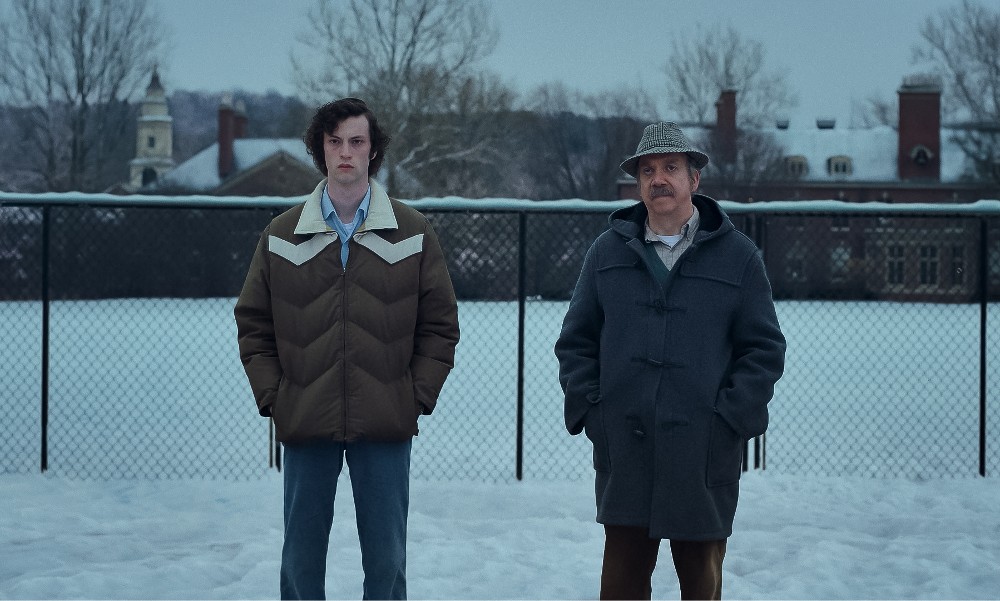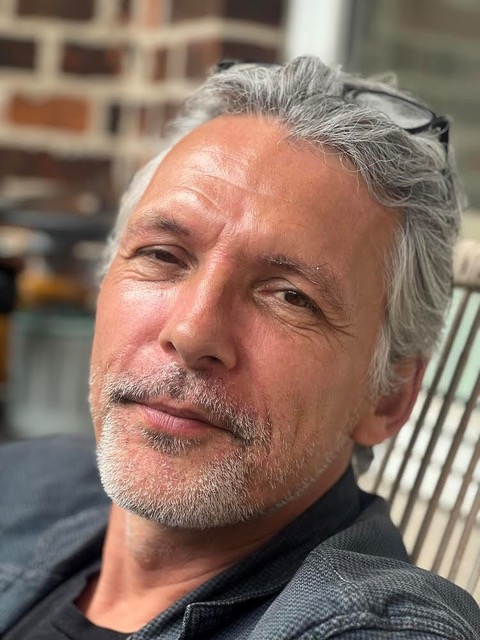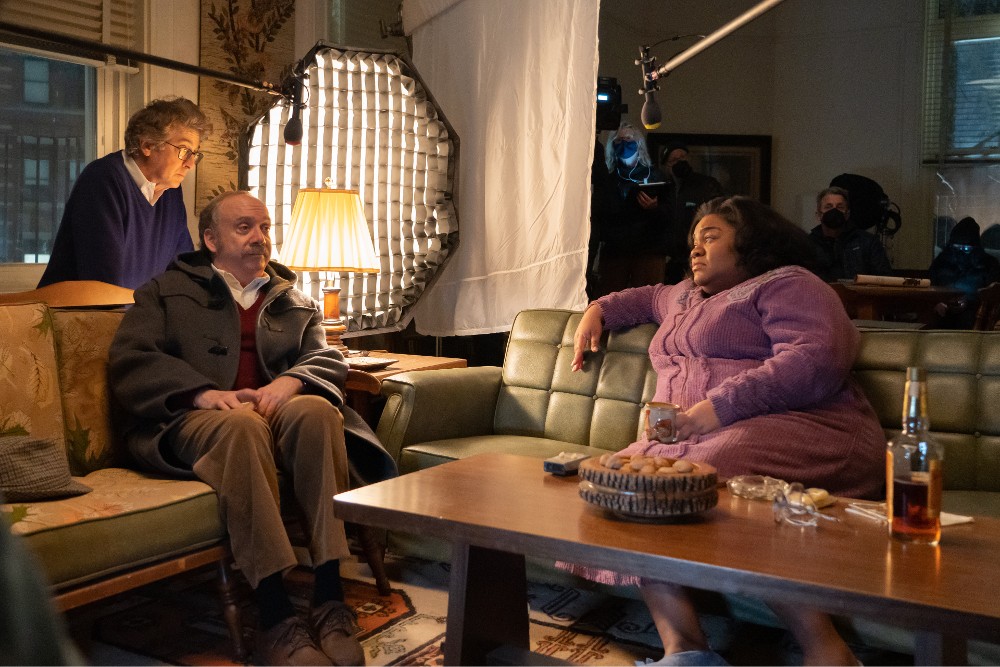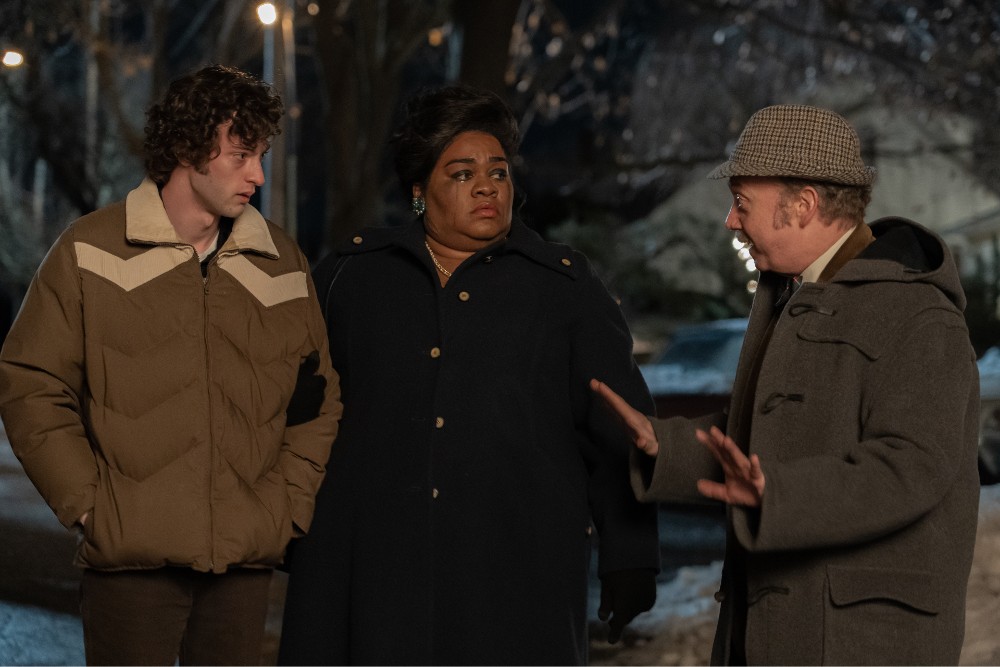
Filmmaker Alexander Payne doesn’t release movies all that often, and when he does, pay attention. His latest, The Holdovers, reunites him with his Sideways star Paul Giamatti, who portrays a disgruntled prep school teacher forced to spend the winter holidays on campus with an uncooperative student (the terrific Dominic Sessa). To ensure a compelling visual experience and give the film a distinctive look, Payne collaborated with director of photography Eigil Bryld.
Below the Line spoke with Bryld about his admiration for Payne and what it was like to work with him, as well as how his documentary background proved helpful. He addressed the key set pieces that were crucial to the look and the challenges of filming in – or artificially creating – winter weather. He had nothing but praise for his colleagues, including production designer Ryan Warren Smith.
Bryld also discussed his other big movie this year, the sex comedy No Hard Feelings, as well as the formative television gig that both won him an Emmy and afforded him the chance to work with David Fincher, Netflix’s first scripted series House of Cards.

Below The Line: What appealed to you about working on The Holdovers?
Eigil Bryld: Number one, I was and am a huge fan of Alexander’s work. I’ve seen all his movies numerous times. Then, I got to know him a few years before The Holdovers because he had this project that was shooting partly in Denmark, Sweden, and mostly in the US, and we spoke about it for a while. That ended up not happening, and then we had another project we were going to do in England, which COVID got in the way of, so we never actually met each other.
But then I was on a movie, and he sent me the script for The Holdovers. I loved the script. I loved the characters. I thought it was very funny. Long story short, it was really a dream come true. For me, the golden era of filmmaking was the seventies. A lot of my favorite movies are from the seventies. I was born in the seventies and they were my formative years, I guess. That focus on characters and character dramas, and the visual vocabulary. Everything was just screaming with joy.
BTL: Do you have a favorite from Payne’s works before this?
Bryld: The one I’ve seen the most is Sideways. It’s a movie I could just keep watching because it’s so funny. It’s so well-made. His style, which I really appreciate and it’s something I always strive for in my own work, is the simplicity, the really well-placed camera. It’s not overly about style or gimmicks. It’s very precise and deliberate. I love that.
I’ve always believed that you move the camera if you want to reveal something. You don’t just move the camera to make it seem sexy or whatever. Everything should be driven by story or character and not by the DP’s vanity or making anything smart. Unless that’s warranted from the script. It’s almost like a glorified documentary film approach.
Actually, when we were blocking, Alexander was always saying, which I love, you block a scene well and then you shoot it like a documentary. I used to do documentaries back in the day, which I loved to do, because one of the things that doing documentaries really teaches you is where to put the camera. Usually you don’t get two chances at it, and you really have to understand, where do you position yourself in the room? Where can you actually tell the whole story from? Where’s the center of gravity? Where are all of the converging lines meeting and all of that? That made it really joyful to do The Holdovers.
It was truly a pleasure because every shot had intention and meaning. There was always a great sense of accomplishment every day. There was nothing broad about it. We didn’t just go fishing in the hope that something would miraculously become something that it wasn’t. That made for a very rewarding experience.
BTL: The sets are also very crucial for this film, because I think about being in the dormitory, being outside with the snow, the gym, the party, all the different things. What was your collaboration like with the production design team?
Bryld: I had never met Alexander before, so when we actually met in person, I came to Boston and Ryan was there. Ryan is fantastic, and, for me, that’s one of the key processes, to go in and look at locations with the director and the production designer, because that’s also how you really start developing the script. Even if you look at a location that’s not the right one, then you figure out why it isn’t the right one. This is the dynamic that’s interesting in this scene.
One of the things we did very early on was we were trying to figure out, what is this town that’s nearby? It was a limited budget, and obviously it was a period film, and we didn’t want to do all sorts of silly digital tricks. We did do some with the snow. We looked at lots of different places that could be the bar, the town bar, and then, if they come out here and go into the car, we’ll see the church over there. Is that the right kind of church, and what is this town really like? The house with the Christmas party, we were looking at so many different houses, and that would change the perspective on that character as well. That whole journey with Alexander and Ryan was instrumental, I think.
Alexander likes to be very hands-on and not theoreticize so much. You look at it and it has to give you an emotional response as well and just make sense. A lot of the places we found actually were of the period. Even that house, that kitchen, it had a dishwasher from the seventies, which is pretty remarkable. We still had to do a lot of work to get the flow of things and whatnot, but we were given a lot of fantastic locations that didn’t take much work from my department or production either.

BTL: I was going to ask you more about the snow. You said that is one of the digital tricks you did use.
Bryld: Yeah, but we only filled in blanks occasionally, because if you just go into a field and there’s no snow and you shoot a scene there and then add the snow later on, it would look applied, because the snow bounces the light around. First of all, we obviously shot it in the winter and we did get lucky with getting a lot of snow in the beginning. We got so much that we couldn’t actually shoot for a couple of days because we got snowed in. But we would then add snow at times and we would use snow blankets, so you basically just put white cloth out and then later on if it’s a long way away, you can’t really tell the difference. If it’s closer, then sometimes digitally you can give it the texture of snow later on.
We would also be quick on our feet, like when we were shooting in the church and a blizzard came in, so we ran out and then we did that shot with Hunham walking up to the dining hall in the very beginning. So that’s real snow. We had to be flexible and nimble enough to take advantage of the weather as it was. But we did have to cheat a little bit at times and add in post.
BTL: During the shooting process, what kind of technology or lenses did you use to really achieve this this period look?
Bryld: We tested a lot of different lenses, but we ended up with H series Panavision primes. The big early question we had was, how do we capture this? We wanted it to actually look like it was made in the seventies, and the film stock in the seventies was obviously much more grainy, it was much more contrasty. Nowadays, one of the problems with film is that it’s become digitized already, because the film stocks are really made for telecine, to be transferred to digital. It’s all about fine grain and less contrast because then you can capture on film, but then most people would make it digital. You want to have it as open as possible for your grading opportunities.
We knew even just shooting on film wouldn’t get us there. So we tested lots of different options. We tested 35 mil, 16 mil. We tested digital. In the end, we ended up shooting digital, because if we’d shot it on film, we would have had to de-grain the image and then add the period correct grain to it, which I thought was ironic. We shot it on an ALEXA Mini and we created a lot that had the color and the contrast of the period.
My grader, Joe Gawler, who did the DI, he’s done a lot of Criterion transfers, so he’s really an expert in how film has aged as well. We built some as if it had been sitting around for fifty years. Then, later in the process, we added halation and the chemical bleach marks on the film stock, grain, gate weave, neck dirt, positive dirt. We had a lot of fun making it look the period.
BTL: I think it looks great. Have you had a chance to see it on a big screen with an audience?
Bryld: I haven’t seen it on the big screen. Because I was working in the UK, I missed the LA premiere and even the London one. But I would love to, more than anything, see the audience’s reaction to it and hopefully hear them laugh.

BTL: You also worked on another big movie this year that I think is radically different, but also uses its setting to great effect. That’s No Hard Feelings. What was that experience like, and is it weird to go from – I don’t know what order you did things – from one of these projects to the other?
Bryld: Actually, No Hard Feelings was the last movie I did, and it came out before The Holdovers. And I’ve done one other. I always try and do movies that are as different as possible. So whenever I’m on a movie, I’m always like, I’m doing a movie now that’s all shot on a stage or whatever, and I’m just swearing to myself, the next movie I’m doing has to be all location. But I had a really good time on No Hard Feelings.
Jennifer Lawrence is a lot of fun to be around, and also Gene Stupnitsky became a really good friend. He’s a very funny, smart guy. I like his process. In terms of everything, both the movie and the process of making it, it couldn’t have been more different, but I guess that’s what keeps me on my toes. Both really great experiences.
BTL: I was looking at all of your credits, and one of the things that stood out to me was House of Cards. That was the first big streaming series, and it has a very distinctive look that makes good use of the shadowy nature of Washington, DC. Do you have fond memories of that series?
Bryld: That was definitely a highlight for me. It was such an ambitious project. It was great working with David Fincher. He’s a master of his craft. He very much has a full, complete philosophy of filmmaking. I learned so much from being part of that. It was also super hard. I did eleven episodes back-to-back, but it was hugely rewarding, especially when David Fincher left. I knew that if I could keep up the style, that was the big point of proving to myself.
With Fincher, there really isn’t any aspect of movie making that he doesn’t do. He could shoot his own films. He could light them. He could do all the sound, the sound mix. He really knows everything down to sort of the minutest detail, even in terms of shine on wall paints and fabrics. He’s a true master. I really enjoy the creative process, but also all the limitations we made for ourselves. The way we didn’t move the camera, so your eyes are really allowed to wander around in the frames and notice little details. So if somebody’s hand is twitching or whatever, the whole craftsmanship, that all fed into the story and the atmosphere and the universe. That was a fantastic experience.
BTL: Before I let you go, is there anything that you haven’t tried yet that you’d really like to do sometime in the near future?
Bryld: For a while, I’ve really wanted to do a movie set in the mountains somewhere. That’s my big dream. I’m sure I’m going to come to regret it, because the weather will change all the time and be a nightmare. I do love mountains, and I love nature, and I haven’t really done something that’s set purely in nature. That’s the script I keep longing for, but it hasn’t come my way yet.
The Holdovers is now playing in theaters.





